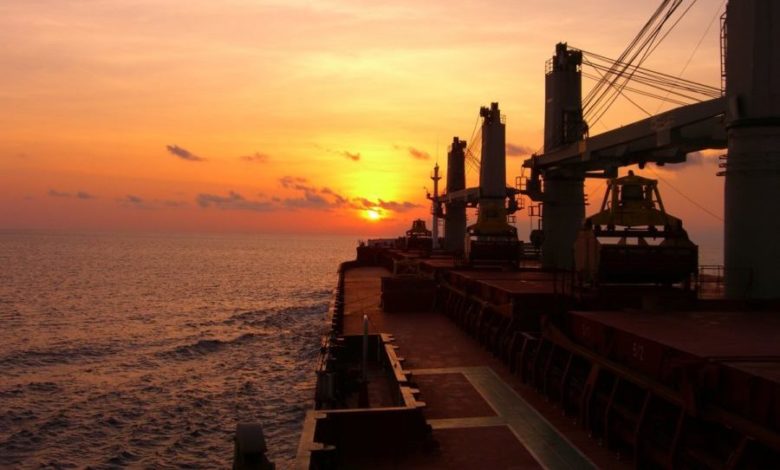The carbon transition pathway

Ralf Garrn from Scope Group on the stark reality of the environmental landscape that could render many ships unable to trade.
Decarbonising transportation and corporate supply chains are vital components of climate-change mitigation. As such, shipping is under the spotlight as banks, institutional investors, governments and other stakeholders scrutinise the sector’s emissions intensity.
The International Maritime Organiszation’s environmental and governance indicators and emerging mandatory standards – including the Carbon Intensity Indicator (CII), the Energy Efficiency Existing Ship Index (EEXI) the Annual Efficiency Ratio (AER), and the Energy Efficiency Operational Index (EEIO) – are not just timely; they will drive the ESG transition narrative of the maritime industry towards ambitious decarbonisation targets.
IMO initiatives will accelerate data disclosure hence enhance the transparency of ships’ environmental performance, sustainability and safety. They will also help the industry and transportation financiers meet their own increasingly stringent regulatory requirements.
In the EU, these include the Sustainable Finance Disclosure Regulation (for investors and banks); the in-process Corporate Sustainability Reporting Directive (for corporates); and, for the shipping industry the FuelEU Maritime for a Green Maritime Space regulatory proposal. This covers the use of renewable and low-carbon fuels and was issued in July as a component of the intensive and wide-ranging Fit for 55 Package. On top of that, shipping will be part of the EU Energy Trading System (ETS). Beyond the EU, there is a growing and parallel framework of ESG regulation and standard-setting in play in China, the US, the UK and elsewhere in the world.
IMO mandated requirements
IMO requirements will demand that all ships of 400 GT and above achieve a minimum Energy Efficiency Existing Ship Index (EEXI) rating. This indicates the energy efficiency of the ship against a baseline and is based on a required reduction factor. Ships will also need an annual operational carbon intensity indicator (CII) and a CII rating.
The EEXI and the CII will be instrumental in pushing the industry to meet the IMO’s Greenhouse Gas Reduction Strategy’s target of cutting carbon intensity by 40% by 2030 and 50% by 2050 (against a 2008 baseline) through energy efficiency improvements, new technology and low or zero-carbon fuel.
The CII measures ships’ operational efficiency in grams of CO2 emitted per debt weight tonnes and per nautical mile sailed. The score will be a core input into a ship’s annual ranking, which runs on a scale of A to E.
Scope’s Ship Review has calculated CII rating estimates for all applicable ship types, currently numbering more than 40,000 vessels, applying the IMO’s methodology and using certified monitoring, reporting and verification (MRV) data as well as satellite data for distances sailed for more accuracy. Based on 2020 data, 18.8% of the ships are considered to have an A rating, 21.8% are B and 23.7% are C rated ships.

The challenge will arise for the 13.9 % of D rated and 21.8% of E rated ships. By January 2023, all vessels for which the CII is a challenge will need to have plans to achieve carbon reduction targets in place. Ships that receive a D rating for three successive years or an E rating in any given year will need to implement remediation plans.
Supporting several stakeholder groups
CII ratings and other environmental standards will support multiple stakeholder groups across the maritime and maritime financing ecosystems.
Knowing what a ship’s CII rating is will enable ship owners and ship managers to understand their improvement options and conduct cost-benefit analyses, which could include the potential to trade carbon credits. This ultimately leads to a suite of eco-friendly measures that meet the requirements of customers and partners on reliable, safe, green and sustainable shipping.
CII ratings will enable port authorities, and flag states/countries to measure port emissions, evaluate the pollution impacts on coastal territory, weigh up climate impact strategies, and conduct audits in order to promote clean and safe shipping operations for cleaner harbours and cities.
Shippers and logistics companies, meanwhile, will be able to assess the carbon footprint of each cargo shipped, assess alternatives and exclude ships that don’t meet minimum standards. By extension, they will need to identify environmentally friendly sea-transport providers to meet the needs of consumers who want their products have a green footprint.
Banks and investors are under increasing social and regulatory pressure to make sustainable lending and investment decisions that support the shift to climate-neutral shipping. Ships that fail to meet climate targets could be shut out of financing markets. Using CII ratings, banks and investors will be able to calculate the carbon footprints of their lending and investment portfolios, adjust loan-to-value metrics and calculate retrofit or scrap options.
Market participants and stakeholders will increasingly demand metrics that enable them not just to compare the emissions of different ships and the environmental footprints of ship management companies but to drill down to compare the emissions of specific voyages so they can select options that emit less CO2 per cargo carried.
Beyond mandatory aspects, the IMO points to things ships can do to improve their ratings: hull cleaning to reduce drag; speed optimisation; installation of low energy light bulbs; and installation of solar/wind auxiliary power for accommodation services.
